What is the Health Care Payment Learning & Action Network?
The Health Care Payment Learning & Action Network (HCPLAN) is an active group of public and private health care leaders dedicated to providing thought leadership, strategic direction, and support to accelerate our health care system’s adoption of alternative payment models (APMs) and accountable care. The HCPLAN mobilizes payers, providers, purchasers, patients, product manufacturers, policymakers, and other stakeholders to reduce barriers to APM participation and support mutual accountability through its shared mission to promote evidence-based prevention, prioritize patient empowerment, drive choice and competition, and accelerate technology-enabled health care.
Since 2015, the health care community has relied on the HCPLAN to drive alignment around core APM design components, host forums and events to share information and inspire action, and build consensus among leaders. The HCPLAN will continue to be a trusted partner that connects the public and private sectors, identifies and shares best practices, and guides the field in rapidly moving toward value-based care.
MISSION
The HCPLAN will advance multi-stakeholder payment
reforms to enable coordinated health care that
achieves better health outcomes and affordability
VISION
Improved health outcomes, resulting in
overall lower total cost of care
GOALS
![]()
INCREASED ADOPTION:
Greater investment in and adoption of effective accountable care arrangements and increased number of individuals attributed to accountable care relationships across lines of business
![]()
PERSON-CENTERED MODELS:
Development and scaling of payment structures and design elements to promote care models that deliver improved outcomes for all people
![]()
INDUSTRY ALIGNMENT:
Scaled adoption of shared APM design elements across stakeholders (including purchasers, payers, providers, and patients) to make America healthy again

Since 2015, the HCPLAN has empowered the public and private sectors with a common framework for classifying APMs, published an interactive tool for designing APMs, measured the progress of adoption, and hosted events to connect and educate stakeholders. Please explore the links below to learn more about how we have led the movement to transform health care payment.
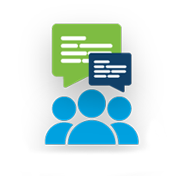
INSPIRE
The HCPLAN Executive Forum connects influential public and private sector leaders committed to aligning their efforts, sharing insights, and providing guidance on how to accelerate payment reform.
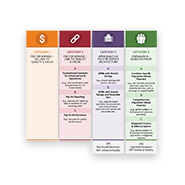
STANDARDIZE
The APM Framework establishes a common vocabulary categorizing payment models and helps stakeholders track progress on payment reform.
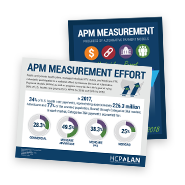
MEASURE
From 2016 to 2024, the HCPLAN conducted a robust annual Measurement Effort to assess early nationwide adoption of APMs and progress toward payment reform goals.
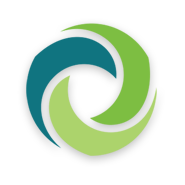
ENGAGE
The HCPLAN convenes stakeholders from across the health care landscape together to network, learn, and share strategies to transform payment.
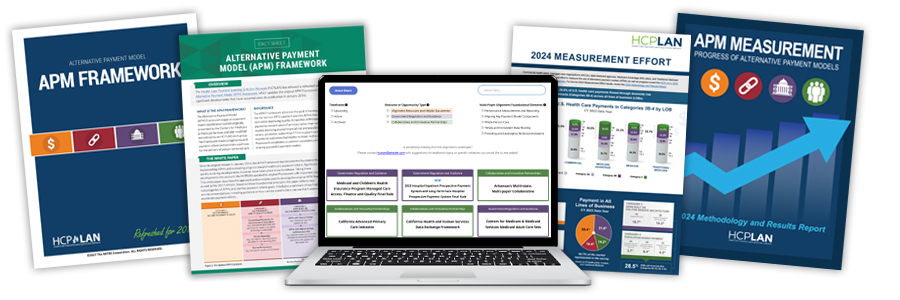
Resources
Explore our collection of fact sheets, reports, infographics, white papers, and more that form the foundations
for understanding.

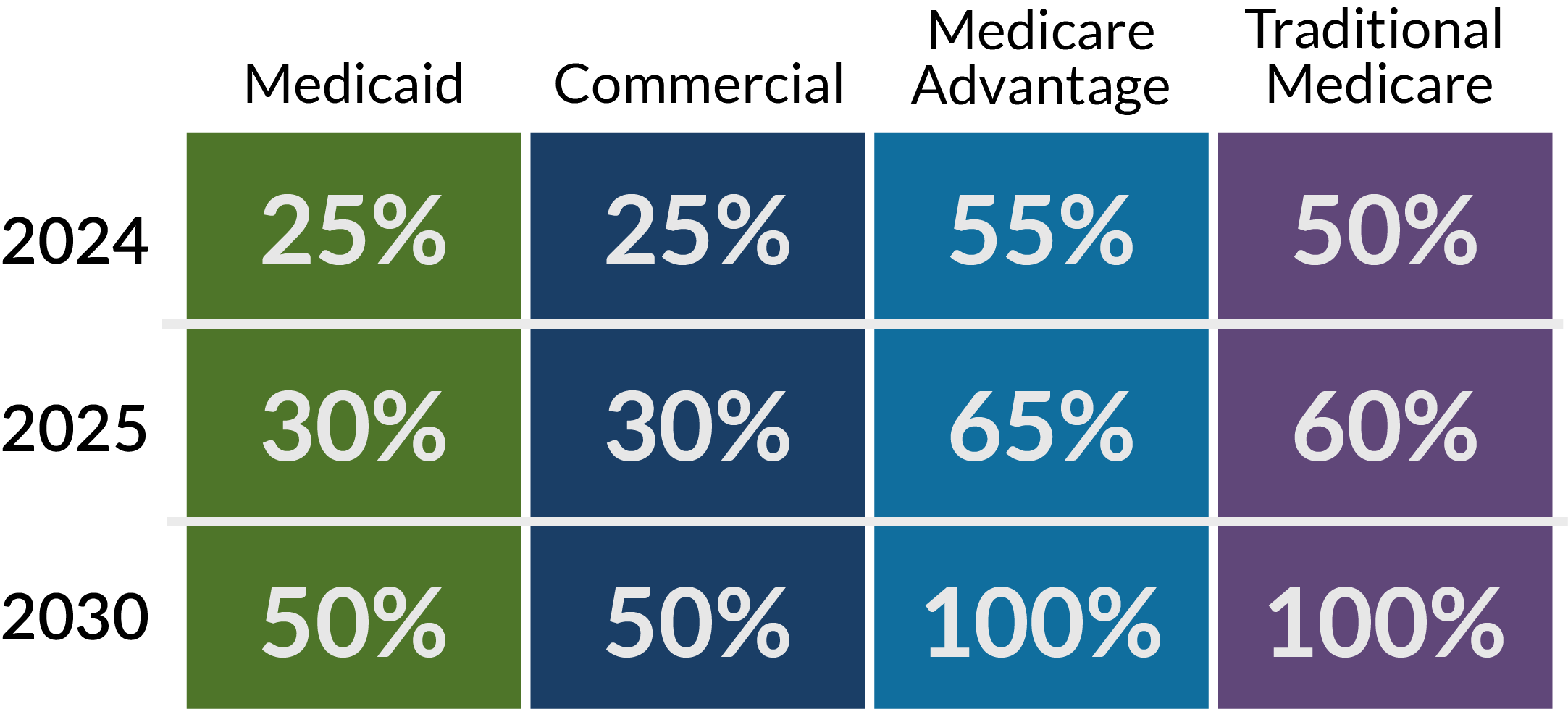





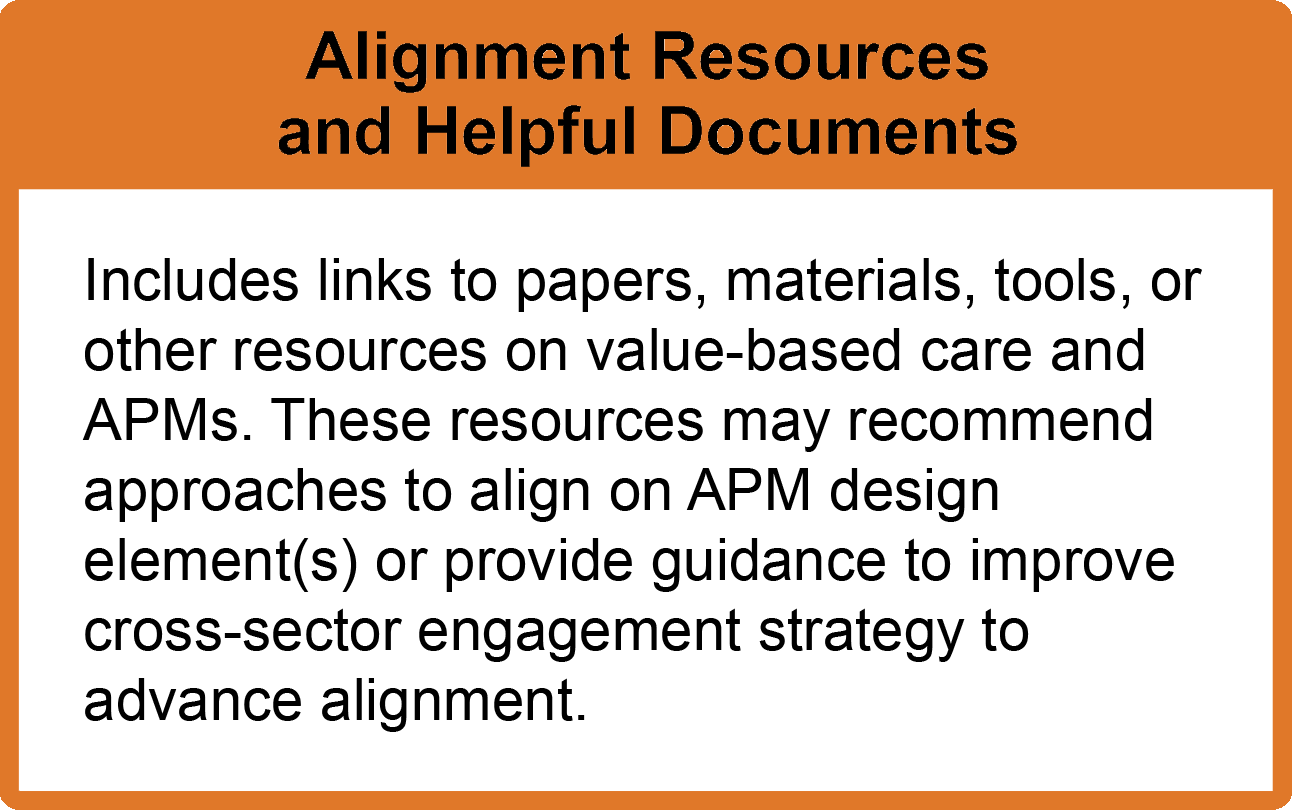









 Emily DuHamel Brower, M.B.A., is senior vice president of clinical integration and physician services for Trinity Health. Emphasizing clinical integration and payment model transformation, Ms. Brower provides strategic direction related to the evolving accountable healthcare environment with strong results. Her team is currently accountable for $10.4B of medical expense for 1.6M lives in Medicare Accountable Care Organizations (ACOs), Medicare Advantage, and Medicaid and Commercial Alternative Payment Models.
Emily DuHamel Brower, M.B.A., is senior vice president of clinical integration and physician services for Trinity Health. Emphasizing clinical integration and payment model transformation, Ms. Brower provides strategic direction related to the evolving accountable healthcare environment with strong results. Her team is currently accountable for $10.4B of medical expense for 1.6M lives in Medicare Accountable Care Organizations (ACOs), Medicare Advantage, and Medicaid and Commercial Alternative Payment Models. Victor is the Chief Medical Officer for TennCare, Tennessee’s Medicaid Agency. At TennCare, Victor leads the medical office to ensure quality and effective delivery of medical, pharmacy, and dental services to its members. He also leads TennCare’s opioid epidemic strategy, social determinants of health, and practice transformation initiatives across the agency. Prior to joining TennCare, Victor worked at Evolent Health supporting value-based population health care delivery. In 2013, Victor served as a White House Fellow to the Secretary of Health and Human Services. Victor completed his Internal Medicine Residency at Emory University still practices clinically as an internist in the Veteran’s Affairs Health System.
Victor is the Chief Medical Officer for TennCare, Tennessee’s Medicaid Agency. At TennCare, Victor leads the medical office to ensure quality and effective delivery of medical, pharmacy, and dental services to its members. He also leads TennCare’s opioid epidemic strategy, social determinants of health, and practice transformation initiatives across the agency. Prior to joining TennCare, Victor worked at Evolent Health supporting value-based population health care delivery. In 2013, Victor served as a White House Fellow to the Secretary of Health and Human Services. Victor completed his Internal Medicine Residency at Emory University still practices clinically as an internist in the Veteran’s Affairs Health System. Tamara Ward is the SVP of Insurance Business Operations at Oscar Health, where she leads the National Network Contracting Strategy and Market Expansion & Readiness. Prior to Oscar she served as VP of Managed Care & Network Operations at TriHealth in Southwest Ohio. With over 15 years of progressive health care experience, she has been instrumental driving collaborative payer provider strategies, improving insurance operations, and building high value networks through her various roles with UHC and other large provider health systems. Her breadth and depth of experience and interest-based approach has allowed her to have success solving some of the most complex issues our industry faces today. Tam is passionate about driving change for marginalized communities, developing Oscar’s Culturally Competent Care Program- reducing healthcare disparities and improving access for the underserved population. Tamara holds a B.A. from the University of Cincinnati’s and M.B.A from Miami University.
Tamara Ward is the SVP of Insurance Business Operations at Oscar Health, where she leads the National Network Contracting Strategy and Market Expansion & Readiness. Prior to Oscar she served as VP of Managed Care & Network Operations at TriHealth in Southwest Ohio. With over 15 years of progressive health care experience, she has been instrumental driving collaborative payer provider strategies, improving insurance operations, and building high value networks through her various roles with UHC and other large provider health systems. Her breadth and depth of experience and interest-based approach has allowed her to have success solving some of the most complex issues our industry faces today. Tam is passionate about driving change for marginalized communities, developing Oscar’s Culturally Competent Care Program- reducing healthcare disparities and improving access for the underserved population. Tamara holds a B.A. from the University of Cincinnati’s and M.B.A from Miami University.


 Dr. Peter Walsh joined the Colorado Department of Health Care Policy and Financing as the Chief Medical Officer on December 1, 2020. Prior to joining HCPF, Dr. Walsh served as a Hospital Field Representative/Surveyor at the Joint Commission, headquartered in Oakbrook Terrace, Illinois.
Dr. Peter Walsh joined the Colorado Department of Health Care Policy and Financing as the Chief Medical Officer on December 1, 2020. Prior to joining HCPF, Dr. Walsh served as a Hospital Field Representative/Surveyor at the Joint Commission, headquartered in Oakbrook Terrace, Illinois.





